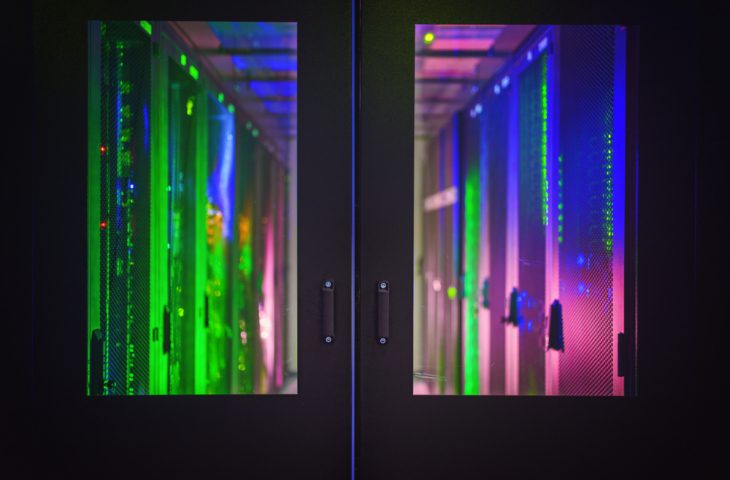Given the increasing demand for AI and the strict sustainability regulations in Europe, are in-house data centers still a sensible solution? Schneider Electric thinks so, especially in Belgium. A well-thought-out approach is necessary.
Companies’ local data centers are facing major challenges. After all, the EU has launched it Energy Efficiency Directive: a regulation which, among other things, requires operators of data centres with a capacity of more than 500 kW to report on their consumption and efficiency.
Data centers also have to deal with stricter standards. Pact for climate-neutral data centers For example, it aims at a Effectiveness of electricity consumption (PUE) of 1.4 and Germany wants to bring data centers to 1.2 by 2026. This means that a data center may consume a maximum of 1.2 watts per watt of IT equipment, with only 0.2 watts of additional energy being required for cooling, among other things. Since data centers are large consumers, this striving for greater efficiency is a welcome thing.
Bigger is not always better
Hyperscalers and colocation specialists have the scale to build new data centers with a low PUE, but what about the company’s own on-site data centers? Such a data center must also run efficiently so that the owner does not have problems with ESG reporting. This is becoming even more difficult given the increasing IT density driven by AI. Where server cabinets used to deliver two to four kilowatts, today they deliver 60 or even 120 kW in extreme cases.
Colocation specialists and hyperscalers want to bring IT infrastructure from such data centers to their locations, but according to Martijn Aerts, VP Secure Power BENE Cluster at Schneider Electric, this is not always necessary or even desirable. “In the European data center hotspot, there are currently problems with permits and access to power supply. In Dublin, citizens have even filed a complaint against the heavily used data centers.”
The European data center hotspot is currently experiencing problems with permits and access to power supplies.
Martijn Aerts, VP Secure Power BENE Cluster Schneider Electric
Large sites running on AI and HPC consume enormous amounts of electricity. Not only the availability of electricity plays a role, but also the capacity of the grid. Data center specialists compete for properties that can be connected to a sufficient power supply. Aerts: “In Belgium, the problem does not exist in this form.”
Small and spread out
“We actually have a lot of small data centers in Belgium,” Aerts notes. “Just think of universities and hospitals.” We won’t immediately convert all of these data centers into huge AI training centers. “The racks with 60 kW or more are for Microsoft, Google and Meta. With us, we will see smaller steps, modularity is possible.”
Aerts believes in brownfield solutions, where parts of existing data centers are converted to house AI servers. As long as they don’t get too big, the impact on the power grid is limited and the Belgian grid can support this.
Such data centers are easily accessible, especially if you are revamping existing sites or opting for modularity. “We are already talking very specifically with customers about making part of the server room AI-capable,” says Aerts. “And there are ready-made modular modules.”
Learning from the telecommunications industry
The latter is very important. “Building a new data center takes two to three years and costs a lot of money. With prefabricated solutions, you can add 10 MW, 5 MW or even 500 kW. It costs less, is immediately available and has a smaller impact on the power grid.
“Such modules have been around for a long time,” Aerts continues. “They grew due to the telecommunications sector, which needed data centers in remote locations. They then developed into small data centers, equipped with modern technology for cooling, power supply and UPS, among other things. They incorporate the latest technology on a small scale, so that a low PUE is possible.”
Generate your own electricity
Now that the DFLAP region (Dublin, Frankfurt, London, Amsterdam and Paris) is struggling with constraints, Aerts says Belgium can play a role by including these smaller data centers. “In addition, data centers can become nodes in a microgrid,” he says. “Data centers consume a lot of energy, but even today they still generate some of it themselves.”
In any case, now that the DFLAP region is increasingly saturated, Belgium needs to think about its role. “We have to solve a paradox,” says Aerts. “On the one hand, as an industry, we want to focus on sustainability and efficiency. Our goal is a net-zero future. But on the other hand, there is AI: an energy-guzzling beast. How are we going to tame it?”
Role of Belgium
A greater deployment in a country with the necessary facilities, such as Belgium, seems to be a solution. The combination of smaller but efficient modular data centers and brownfield conversions of existing sites can facilitate this. In the future, not only the large colocation providers and hyperscalers will call the shots, but the on-premises corporate data center can also add value.
